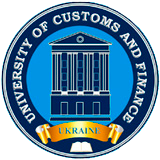ASSESSMENT OF THE STATE OF INFORMATION SECURITY USING EXPERT SYSTEMS
Abstract
The problems considered in the article are related to ensuring the specified indicators of efficiency and reliability of the designed software complexes for information systems through a structural approach to the main stages of the software life cycle. The relevance of this class of software is determined by the wide distribution of such systems. Distinctive features of the modern complex of programs for information systems are their large information and logical complexity, significant volumes of programs, work in conditions of a limited amount of computing resources with high requirements for the efficiency and reliability of their functioning, as well as a pronounced production and technical nature of software tools for all life cycle stages. The main problem associated with the creation of complex software systems is to increase the reliability of programs. One of the promising ways to solve the problem is the implementation of a detailed regulated technological process. At the same time, the required level of regulation has been achieved as a result of a structural approach to ensuring reliability at various stages of software life. Among the known ways to improve the reliability of software, this article pays special attention to progressive methods of creating programs and the widespread use of automation tools, since the technology under consideration and its instrumental support are based on a structural approach to software development. The role and influence of the corresponding structural methods on the reliability characteristics of the software is shown. In general, the structural approach makes it possible to increase the efficiency of working with software based on the implementation of three provisions: streamlining and unifying the structural construction of the software package; ordering work to eliminate errors; creating conditions for the effective application of assembly programming technology based on the software backlog.
References
2. I. Savchenko, O. Shapoval, V. Bakharev, T. Chupilko, M. Babaryka, and N. Dzyna. "Mathematical Model of Rheological Processes of Composite Materials Deformation.". (2022) doi:10.1109/MEES58014.2022.10005658
3. O. Khrebtova, O. Shapoval, O. Markov, V. Kukhar, N. Hrudkina, and M. Rudych. "Control Systems for the Temperature Field during Drawing, Taking into Account the Dynamic Modes of the Technological Installation.". (2022) doi:10.1109/MEES58014.2022.10005724
4. V. Kulynych, A. Shapoval, and V. Dragobetskii. Hard Alloys Recycling as a Promising Direction of Technological Equipment for Machine-Building Production. Materials Science Forum. Vol. 1052 MSF (2022). doi:10.4028/p-49mxgo
5. Parshina O., Savchenko Yu., Polyanovs`ka B. Problem aspects of financial and economic security in the conditions of development crypt. Scientific Bulletin of the Dnipropetrovsk State University of Internal Affairs. Special Issue № 1. 2019. pp. 243–248. DOI: 10.31733/2078-3566-2019-5-243-249.
6. Паршина О.А., Паршин Ю.І., Савченко Ю.В. Економічна безпека в умовах діджиталізації: сучасний стан та перспективи розвитку інформаційного суспільства. Науковий вісник Дніпропетровського державного університету внутрішніх справ: Зб. наук. праць. 2019. № 2. С. 148–155.
7. Паршина О.А., Паршин Ю.І., Савченко Ю.В. Система менеджменту забезпечення конкурентоспроможності промислової продукції в умовах дефіцитності ресурсів. Східна Європа: економіка, бізнес та управління. 2019. №6 (23). С. 354–359. URL: (http://www.easterneurope-ebm.in.ua/journal/23_2019/55.pdf)
8. V. Dragobetskii, V. Zagirnyak, S. Shlyk, A. Shapoval, and O. Naumova. "Application of Explosion Treatment Methods for Production Items of Powder Materials." Przeglad Elektrotechniczny 95 (5): 39-42 (2019.). doi:10.15199/48.2019.05.10
9. M. Zagirnyak, V. Zagirnyak, D. Moloshtan, V. Drahobetskyi, and A. Shapoval. "A Search for Technologies Implementing a High Fighting Efficiency of the Multilayered Elements of Military Equipment." Eastern-European Journal of Enterprise Technologies 6 (1-102): 33-40 (2019). doi:10.15587/1729-4061.2019.183269
10. S.G. Karnaukh, O.E. Markov, V.V. Kukhar, and A.A. Shapoval. 2022. "Classification of Steels According to their Sensitivity to Fracture using a Synergetic Model." Int J Adv M Tech 119 (7-8): 5277-5287. (2022) doi:10.1007/s00170-022-08653-y
11. I. Lutsenko "Identification of Target System Operations. Development of Global Efficiency Criterion of Target Operations." Eastern-European Journal of Enterprise Technologies 2 (2): 35-40. (2015.) doi:10.15587/1729-4061.2015.38963
12. M.V. Zagirnyak, V.V. Prus, and A.V. Nikitina. "Grounds for Efficiency and Prospect of the use of Instantaneous Power Components in Electric Systems Diagnostics." Przeglad Elektrotechniczny 82 (12): 123-125 (2006.)
13. Savchenko, I., Shapoval, A., Kuziev, I. Modeling of high module power sources systems safety processes. (2022) Materials Science Forum, 1052 MSF, pp. 399-404.
14. Savchenko, I., Shapoval, O., Kozechko, V., Markov, O., Hrudkina, N., Voskoboynik, V. Optimization of Informative Signals Stability Along the Waveguides. (2021) Proceedings of the 20th IEEE International Conference on Modern Electrical and Energy Systems, MEES 2021.
15. Hrudkina, N. S., O. E. Markov, A. A. Shapoval, V. A. Titov, I. S. Aliiev, P. Abhari, and K. V. Malii. (2022). "Mathematical and Computer Simulation for the Appearance of Dimple Defect by Cold Combined Extrusion." FME Transactions 50 (1): 90-98. doi:10.5937/fme2201090H
16. O.E. Markov "Forging of Large Pieces by Tapered Faces." Steel in Translation 42 (12): 808-810. (2012.) doi:10.3103/S0967091212120054

 ISSN
ISSN 




